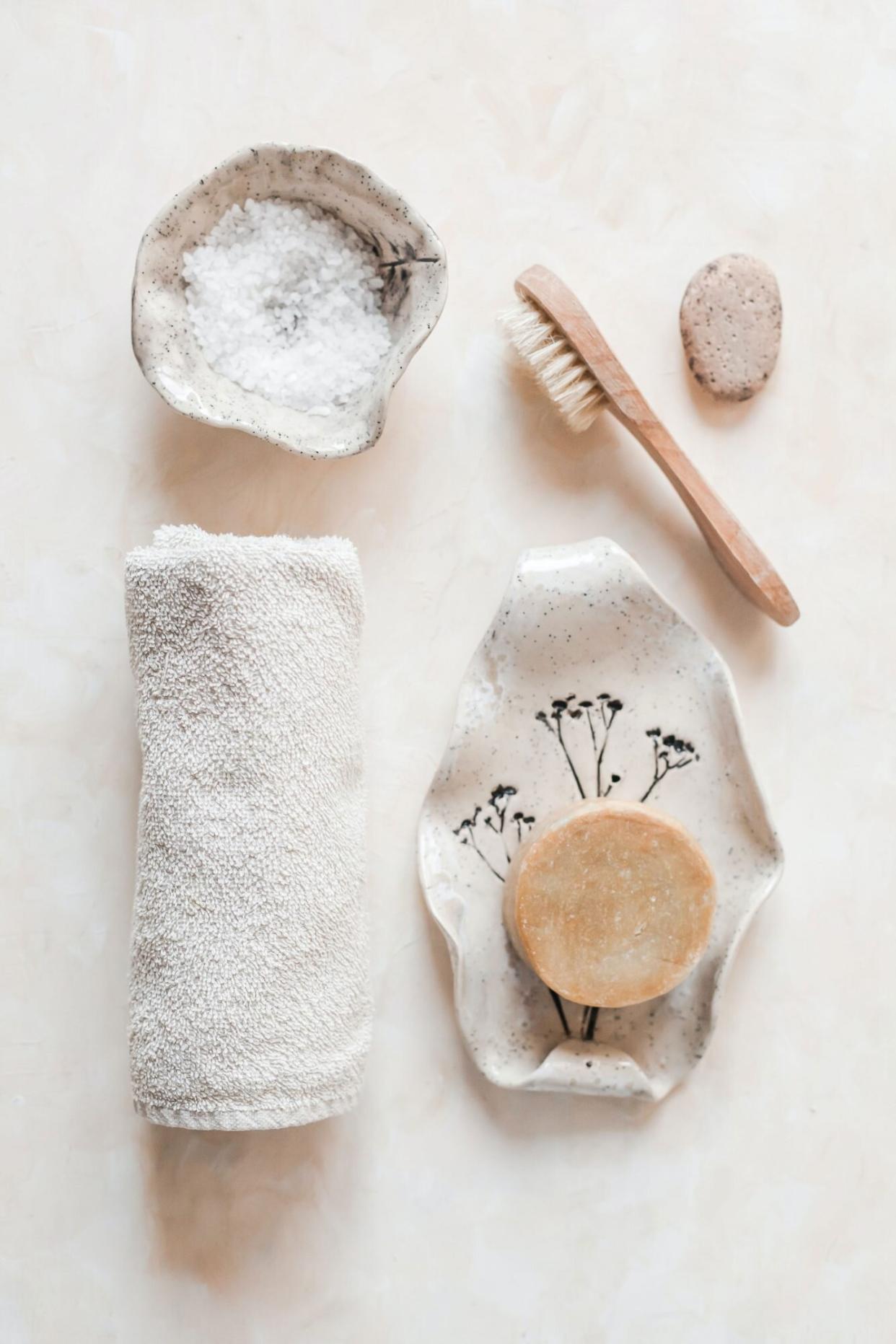Dry Brushing Will Get Your Skin Summer-Ready

Diana Akhmetianova/Unsplash
As the hot weather continues, I'm looking forward to being out in the sun more often. But my skin is still feeling wintry dry, and not as smooth as I'd love for it to be when I switch into swimwear, so I've been researching different ways to exfoliate my skin and reduce cellulite - something I'd personally rather be rid of, given the choice.
A ritual that I've seen gaining increasing popularity is dry brushing. Many celebrities seem to swear by the at-home beauty treatment, including Miranda Kerr, who says it's an essential part of her self-care routine.
Dry brushing is pretty simple - as the name suggests. It involves brushing a natural bristle brush over the body to boost circulation, detoxify the lymphatic system, and improve the skin's ability to eliminate toxins through the pores.
The motion of dry brushing removes dead skin cells from the top layer of skin and helps to improve the appearance of cellulite by distributing fatty deposits, and toning the muscles and tissues below the skin's surface.
RELATED: This Is the Supermodel Way to Minimize Cellulite and Ingrown Hairs
But don't think it's anything new.
Dry brushing has been used as part of ancient Ayurvedic medicine for centuries and is often called Garshana, an ancient Sanskrit word that translates to "friction by rubbing." The Ayurvedic practice traditionally involves using raw silk or linen to perform the ritual.
"Dry brushing is beneficial for anyone with normal or oily skin," says Sai Demirovic, esthetician, and co-founder of Glo Spa. "However, if you have eczema, sensitive skin or psoriasis, it's best to stay away from dry brushing as it can cause even more damage."
VIDEO: Why You Should Add a Body Oil to Your Routine / Best Body Oils
Does Dry Brushing Have Any Side Effects?
Dry brushing should only be done twice a month says Demirovic. "If you over brush or move too quickly you can rip apart the skin which can cause irritation and bruising." The esthetician adds that frequent brushing can also cause the skin to become dry and sensitive.
How to Dry Brush
Below, Demirovic shares 10 steps to achieving effective dry brushing.
1. Dry brushing is best done in the morning before bathing, with dry skin that is free from lotion or oil.
2. Make sure the room where the brushing will be done is at a comfortable temperature.
3. Stand in the bathtub, shower or on a towel to avoid getting flaky skin on the floor.
4. Using a natural bristle brush, like Dr. Barbara Sturm The Body Brush. Massage vigorously to stimulate the skin and lymph nodes. Always keep the direction of the stroke in an upward motion or toward the heart. The strokes should be medium pressure as you don't want to irritate the skin.
5. Begin at your ankles and make long strokes upwards to your knees to push up lymph fluid, then do the same on your upper legs. Apply light pressure where the skin is thin or sensitive and firm pressure on thicker areas like the bottom of the feet.
6. Apply wide circular strokes on the stomach and joints in a clockwise motion.
7. Continue to neck and décolletage. Start at the jawline and move down toward your chest, going over your heart in a circular motion.
8. Massage from the hands up to the shoulders using long strokes.
9. After dry brushing, take a cool shower to help remove dead skin cells.
10. Moisturize while your skin is damp to seal in oils.